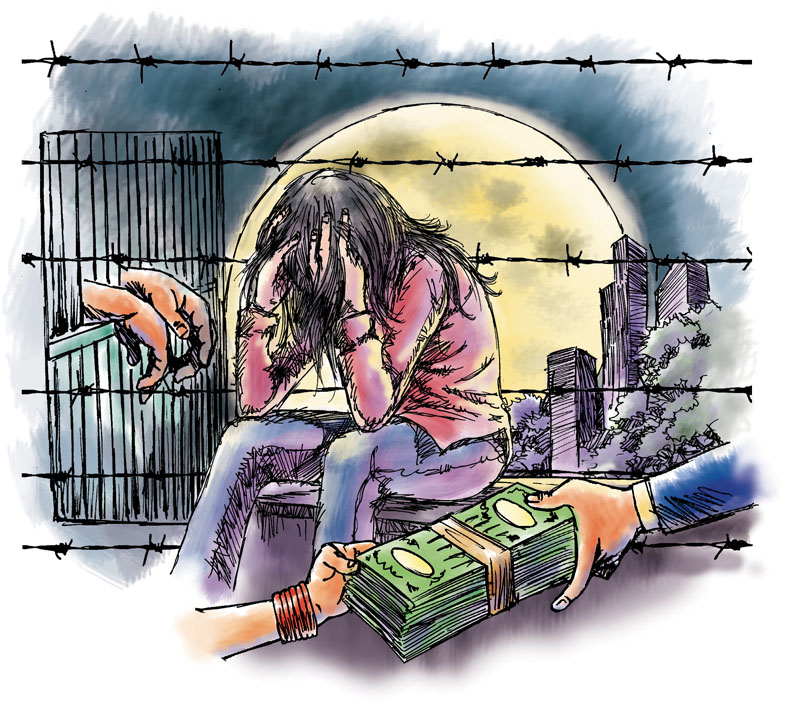‘Entertainment sector fertile ground for traffickers’
- Workers are vulnerable to trafficking due to lack of employment opportunities, low income and exploitation
Kathmandu, July 5
Entertainment sector is a fertile ground for human traffickers, according to National Report on Trafficking in Persons, 2015/16.
Entertainment sector generally includes dance bars, dohori restaurants, cabin restaurants, massage parlours, eateries and guest houses.
According to the report published by National Human Rights Commission, there are an estimated 6,000 to 7,000 female workers in cabin restaurants; 3,000 to 4,000 in dance bars; 900 in dohori restaurants and 900 in massage parlours in the Valley and along the major highways of the country.
The number of workers in the entertainment business did not decline even after the 2015 earthquakes.
Further, the entertainment industry has grown as an informal sector as most of the businesses are not registered with the concerned authorities to avoid tax and other types of monitoring by government agencies.
Although entertainment businesses are found throughout the Valley, they are mainly located in areas such as Thamel, Gongabu bus park, Kalanki, Koteshwor, Sinamangal, Chabahil, Sundhara and Durbar Marg, it said.
“There is a presence of middlepersons when the victims are at crisis — economically or socially. The agents take advantage of the victims’ miserable situation. Workers are forced to establish sexual relations. In this sector, under-aged children are also lured and most of the victims are not aware of their rights,” read the report.
Not all workers in the entertainment sector are at risk of trafficking, but many are due to their vulnerabilities such as lack of employment, low income, abandonment by family, and abuse and exploitation in the entertainment sector.
The study showed that 14 per cent of the 312 interviewed girls and women working in the entertainment sector in the Valley had already been abroad for employment at least once. They worked in 15 different countries and some of them worked in more than one country.
They mainly worked in foreign countries as domestic workers, gardeners, dancers, singers, cleaners, beauticians and waitresses.
In this sector, girls and women are recruited through friends/peer groups, middlepersons, relatives and even street vendors. Girls and women are recruited by looking at their age and beauty and they require no skill, experience and education.
“More than 22 per cent of female workers in the entertainment business constitute children and the rest are adult female workers. Girls and women working in the sector are aged up to 48 years. The origin of these respondents was nearly 40 districts out of 75 in Nepal,” the report further stated.
The report said an estimated 23,200 people were trafficked in the fiscal 2015/16 in Nepal. It provides an estimate of 6,100 persons as trafficked; 13,600 persons as victims of attempted trafficking; and 3,900 persons as missing.
Of attempted trafficking victims (13,600), 98 per cent are females, 50 per cent children and 50 per cent adults. Of the trafficked persons (6,200), nearly 40 per cent are males and the rest are females.
Of the number of untraced persons (3,900), more than 70 per cent are girls.
Smuggling to China for forced sex, to Afghanistan for security guard, smuggling to the United States via Latin America, smuggling to South Korea and China for marriage has been established.
Key agents of human traffickers comprise a range of individuals as well as agencies including recruiting agencies, education consultancies, marriage bureaus, cultural groups.
Human trafficking for dance in orchestra and trafficking in the name of network business to India are evolving dimensions of trafficking.






